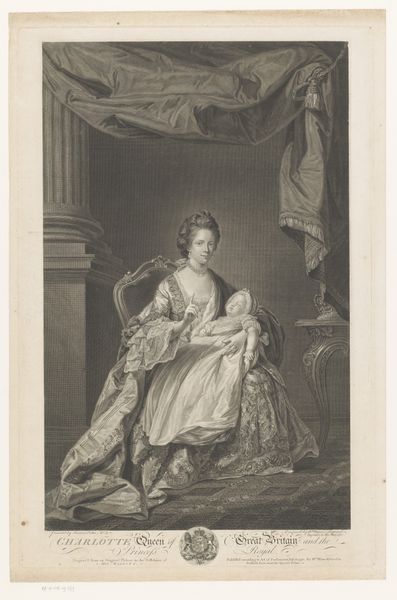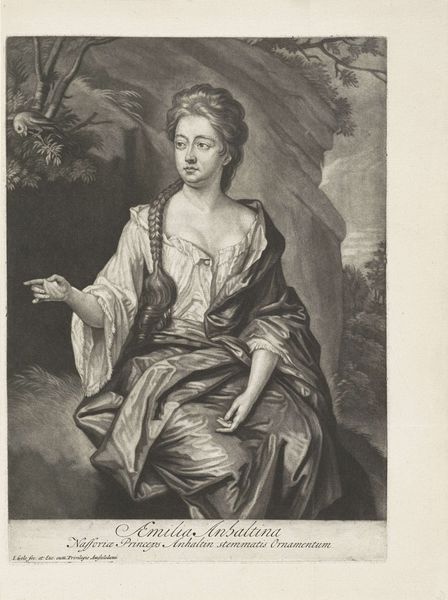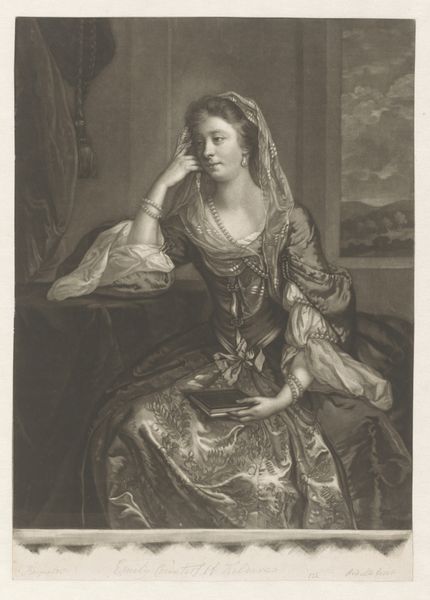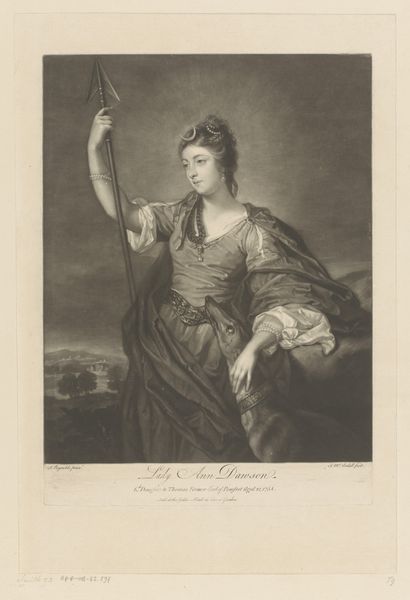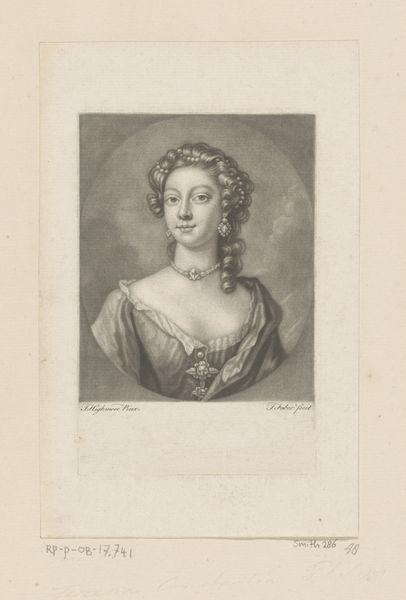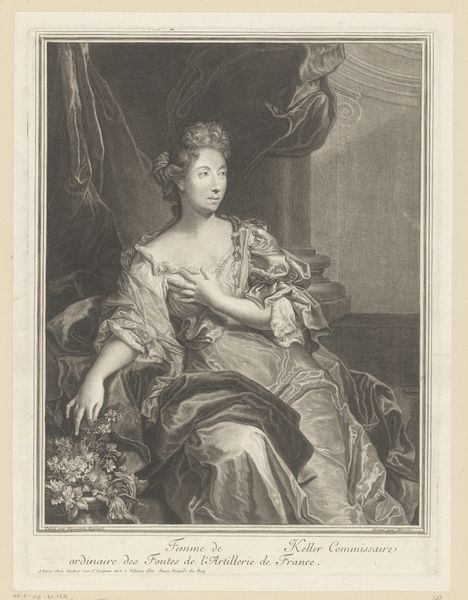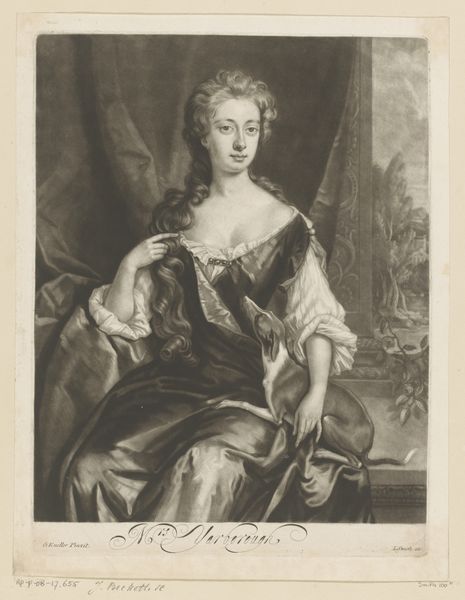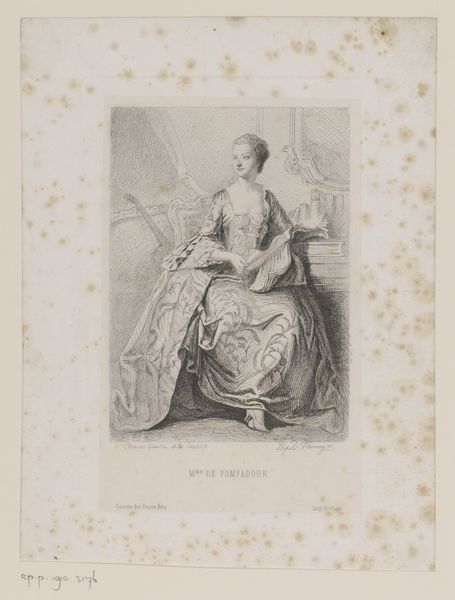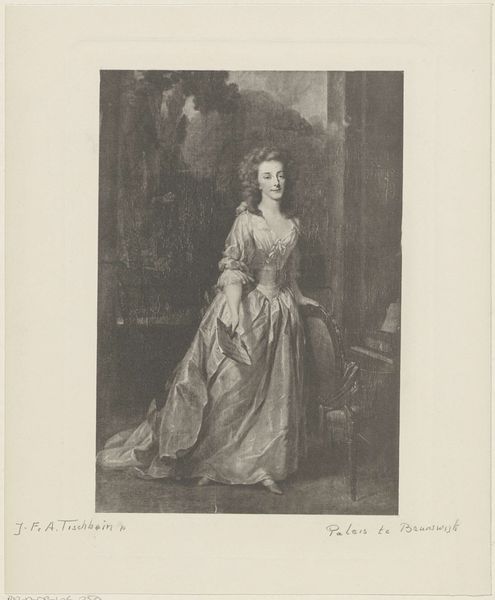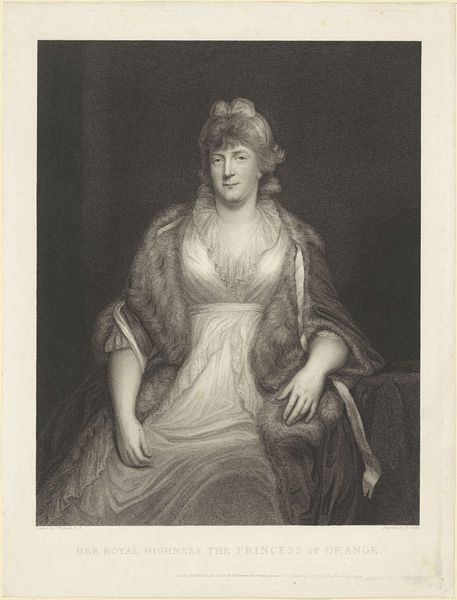
engraving
#
baroque
#
history-painting
#
engraving
Dimensions: height 354 mm, width 253 mm
Copyright: Rijks Museum: Open Domain
Editor: Here we have "Portret van Anastasia Robinson," an engraving by John Faber II from somewhere between 1723 and 1727. There's something about the composition; it feels staged, theatrical, like a persona is being presented as much as a person. What do you see in this piece that might help us understand that performance? Curator: Well, immediately, the context of its creation and display matters. Engravings like this weren't just about likeness; they circulated images and ideas about social status and cultural capital. Consider the subject, Anastasia Robinson, a celebrated opera singer. This portrait, reproduced and distributed, helped construct and solidify her public image. Editor: So, it’s less about capturing her essence and more about shaping her brand? Curator: Precisely! Faber’s work operated within an established system where portraits served specific social functions. Note the way she's posed at the harpsichord – music wasn't just a pastime; it was a demonstration of her education, refinement, and position in society. Look also at the curtain and the column in the background; wouldn't you say that evokes wealth and classicism? Editor: Definitely, almost like setting the stage for an opera! I guess I hadn't considered how an artwork itself can participate in creating someone's celebrity. Curator: And consider how Faber, through this engraving, participates in that celebrity as well. He’s not merely reproducing an image, but interpreting and disseminating it, influencing public perception. Do you think that impacts how we view portraiture of prominent people even today? Editor: That's a great point. Now, when I look at the artwork, it seems very contemporary, how both Faber and Robinson seemed concerned with curating a public image. I will look at portraits differently from now on. Curator: Exactly! This shows us how understanding the historical and social forces shaping an image is crucial to really *seeing* the work.
Comments
No comments
Be the first to comment and join the conversation on the ultimate creative platform.
